Folklorist Michael Fortune takes a deep dive into the myths and legends behind Hallowe'en...
I’ve been recording and sharing content about Hallowe’en from around the country and beyond for the past 20+ years and although I spent many of these years promoting the Irish connection to Hallowe’en, I now see a lot dubious claims circulating that we invented it and it was just an Irish tradition.
We certainly influenced the American tradition, but we didn’t really invent it.
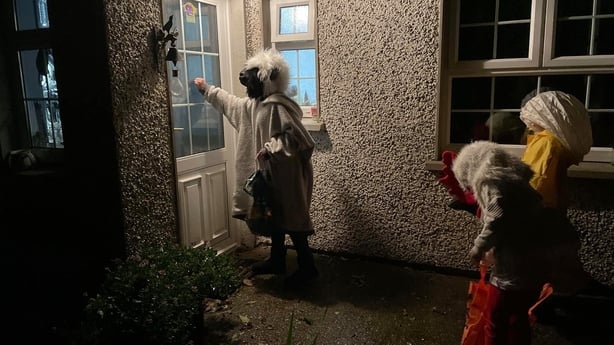
Most of our Hallowe’en experiences are shared with our neighbours over in Scotland, the Isle of Man, Wales and parts of England, as well as our mainland European neighbours which is tied in with their St. Martin’s Eve traditions on the 11th of November or 'Old Hallowe’en’ as it was called by some.
I do not have the word count to unravel the complete Hallowe’en tangle, but I will spell out the four main distinctive elements which make up the Irish Hallowe’en experience; Food/Harvest, Mumming/Disguise, The Dead/Light and Tricks/Devilment. I will share just one with you - the Mumming/Disguise element.

Mumming/Disguise
Unlike other parts of the county and country, the Hallowe'en tradition along the north east coast of Wexford where I grew up was very strong. Many of us grew up knowing Hallowe’en as ‘All Hollow's Eve’, ‘All Holland’ or ‘Vizzarding Night’, while in other parts of north Wexford it was known as ‘Blackmen Night’ or ‘Collicking Night’. In other parts of the country they called it Púca Night, Pookie Night, Juggy Night, Snap Apple Night and over in Newfoundland, Colcannon Night.
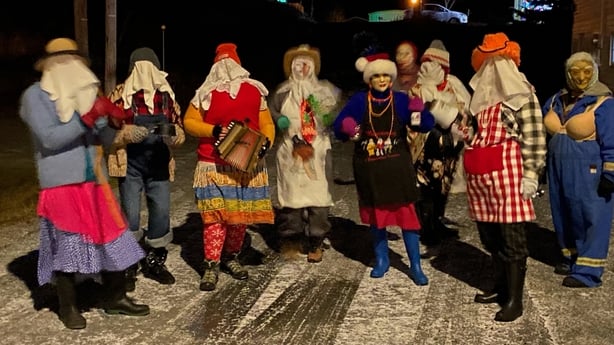
‘Vizzarding Night’ (also spelt vizard, vissard, vissord) was the older term around Ballygarrett, and anyone calling to the house would be referred to as a ‘vizzard’, as in "Oh the vizzards are coming".
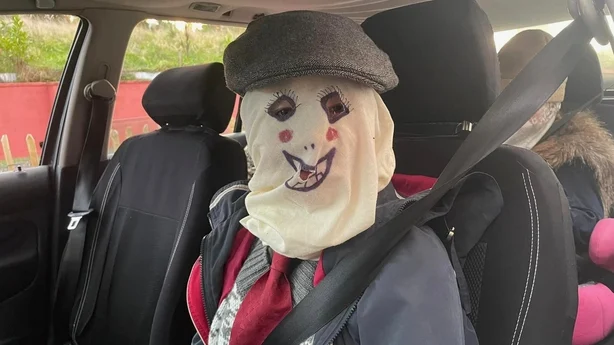
The word is Middle English, of French origin, and vizzard masks can be traced back to 16th century England – the ‘visor’ on a helmet has the same origin. In fact, you will often hear an older person tell a child that "their vizzard is filthy", which is to say that the child has a dirty face.
Like our neighbours in the Isle of Man and Wales, many children grew up with the story that on Hallowe'en night the souls of our dead relatives came out. However, so did evil spirits, so we the living dressed as ‘the dead’ in a bid to fool the evil ones and protect the good. I personally think this story has grown far too many legs over the years, and that the dressing up aspect was part of a wider mumming/guising tradition where you house-called looking for money, food and drink, which was found right across Europe.
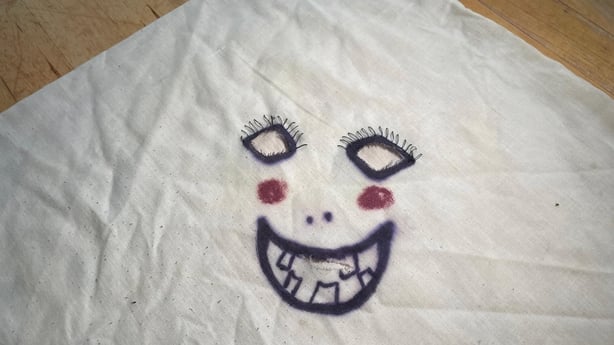
I find that there are a lot of re-invented narratives these days, and I find that the "Celtic Twilight/Samhain Fog Machine" (as I call it) gets a good blow out this time of year from many quarters. There is a contemporary narrative that everything goes back to the beginning mists of time, but I don’t believe that. Often what we have now are centuries old layers and tangles of traditions, interpretations and to try and fully ‘understand’ them can be problematic.
But back to the tangle of dressing up for Hallowe'en.

For dressing up, the idea was simple - you disguised yourself by whatever means you could. Usually women would become men, men become women and you'd take on bumps and lumps to help in that transformation. You would use old pillows/bundles of straw to give you a belly or a hump on your back or borrow/rob a bra and pad it out if you were a man trying to be a woman. Women would try their best to cover up their hands with old socks or gloves, so that people would not know that they were women. My mother always did this.
People were always very conscious of not picking a coat or a pair of boots that could be recognised by the neighbour too, and you'd often see bags tied around shoes and boots to cover them up.This carry-on was alive and well in my grandmother's time as she recalled stories to me of men (usually men) dressed like this calling to her house in the early 1920s. They usually called to get money, food and drink if it was going. It was usually money, though, in our part of Wexford, as this would be pooled and they'd have a Hallowe'en dance a few nights later.
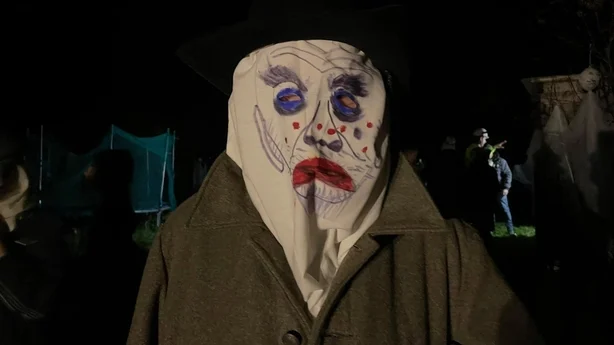
My grandmother often told me that children didn’t go out in her day in these rural areas, and that this began to change around the 1950s for them. This style of dressing up/down is identical to the Newfoundland mumming tradition, which was brought over by and large by the south-east Irish communities and still continues there for St. Stephen’s Day and Christmas.
There is also a general narrative out there now that this form of house-calling and dressing up was done all over Ireland in the past - it wasn't. It was mostly done in Leinster and Ulster and a tiny few pockets in Munster and Connaught, and only became truly widespread in the 1950s and 60s.
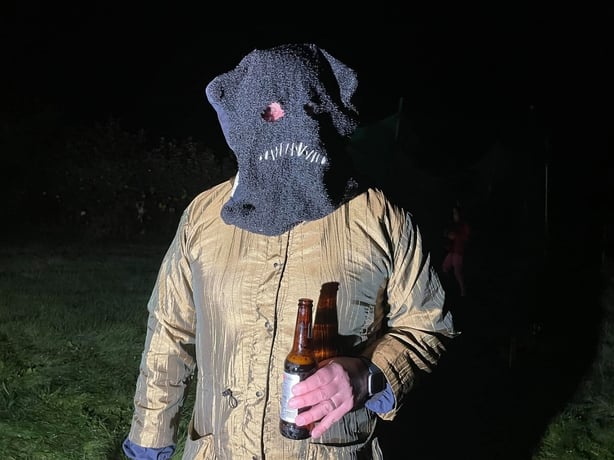
Even in Wexford, it was popular in north Wexford compared to the south, and I’ve recorded many older people from Mayo and Sligo who never heard of dressing up at Hallowe’en in their youth in the 1930s and 40s, and only saw it for the first time in the 1970s.
Limerick folklorist Kevin Danagher did a great map on Guising in Ireland back in the 1940s and it is a great visual resource showing the spread of the tradition. Naturally, I’d say there were a few dots missing on this map but by and large this was the overall picture.
This is not a reflection of other mumming/guising practies in the Irish calendar, but just at Hallowe’en.
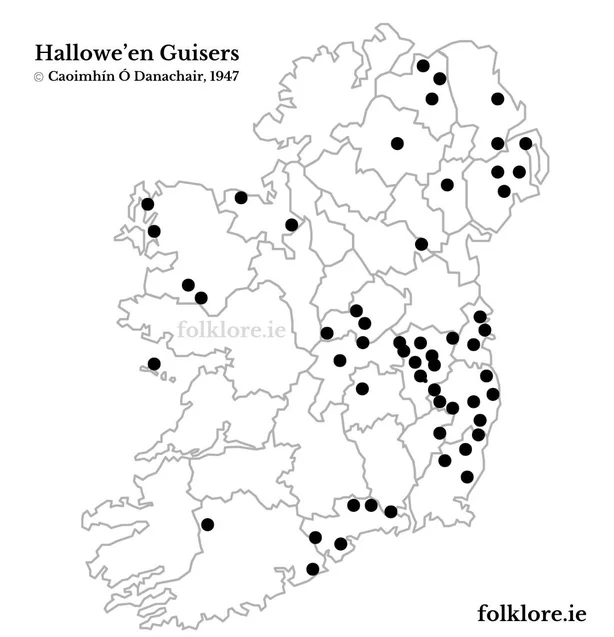
Personally, I believe the dressing up aspect of Hallowe’en is not as old as many think and could only be a couple of centuries old or even less.
Growing up in Ballygarrett there was always a Hallowe’en party of some sort in the local pub. Many locals used it as an opportunity to dress up in disguise and go out for the night. Many a night I spent sweating under a mask sipping pints through a small hole. One thing which always struck us was how ‘The Bathers’ (aka Dublin people) who’d be down for the weekend would always go to great lengths to dress up in ‘Fancy Dress’ and try to ‘be something’ and have wigs, costumes and - most importantly - they’d never cover their face.
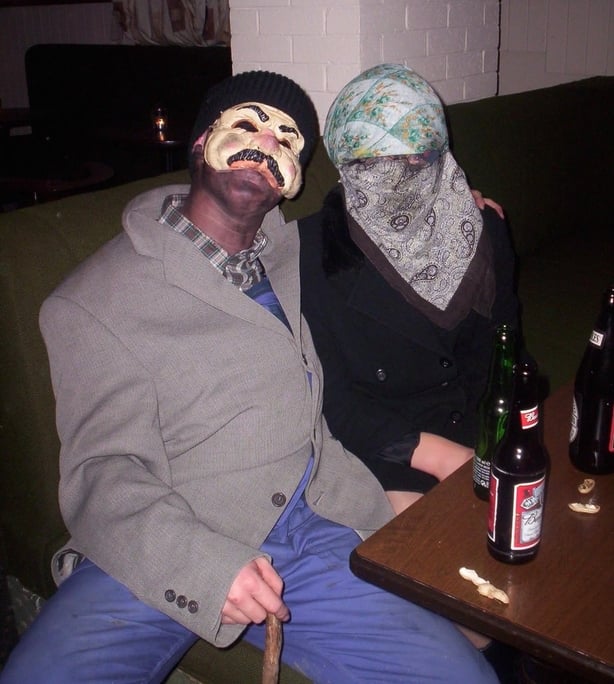
This was the opposite to us locals, as the idea for us was that people never knew who you were and would spend half the night guessing. Always great craic but also a ripe opportunity for young lads who wouldn't be the legal age for a drink, and they who'd dress up and go in and chance an old sneaky pint.
One of my lingering Hallowe’en memories for me involved my late mother and grandmother, where every Hallowe’en night my mother would always dress up and call to my grandmother's house next door where she would act the eejit, get something and leave again delighted she fooled her.
Watch: We Invented Halloween is the title of a series of films recorded on Halloween night, between 2005 and 2014 in the Fortune's family home in rural County Wexford.
This was going on since the early 1980s, and back in 2005 I noticed my mother was still doing this. As I had the camera with me that night, I decided to record it. I did this up until 2014, as my grandmother and mother passed away in 2015 and 2017. As they both knew me, they ignored the camera and I managed to capture the real exchange and give you what is probably the closest you will get to the genuine, guising tradition of Hallowe’en in Ireland.
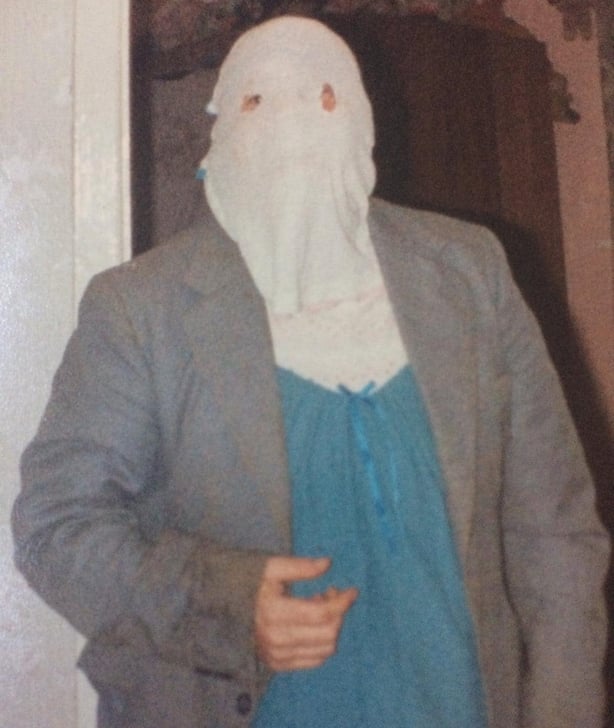
Just to point out, we should never forget that the host/home-owner was equally important in this contract on Hallowe’en night, as they allowed a masked visitor into their home, and their hospitality and restraint was central to the performance. "Look at the cut of her’ my grandmother would say and in the same breath she'd give her a complete swiss roll saying "That's for your tay, for yourself and Mister Fortune there…"
Before my grandmother died I decided I owed it to her to let her know who that person was who'd been calling to her for the past 35 years. When we were younger, she'd always thought it was one of my sisters, then over the years, nieces, girlfriends, boyfriends and neighbours. Little did she know it was my mother and I'm sure if she had known, there would have been one hoor of a row.
So on Hallowe’en night on the 31st of October 2014, I called to granny in her hospital bed in Wexford with my own girls dressed up. I knew this would be the last time I ever marked this night with her, so I as was leaving.,I told her who it was calling up to her all those years. And it went something like this:
M: Did you know who was calling up over the years?
G: Who?
M: Mammy.
G: Your mother?
M: Yea.
G: The aul b****.
And that was that. No drama. She passed away three months later and that was the end of that very private but real very Hallow’en tradition from this part of the country.
Find out more about Michael Fortune and Folklore.ie here.
Disclaimer: The copyright of this article belongs to the original author. Reposting this article is solely for the purpose of information dissemination and does not constitute any investment advice. If there is any infringement, please contact us immediately. We will make corrections or deletions as necessary. Thank you.






